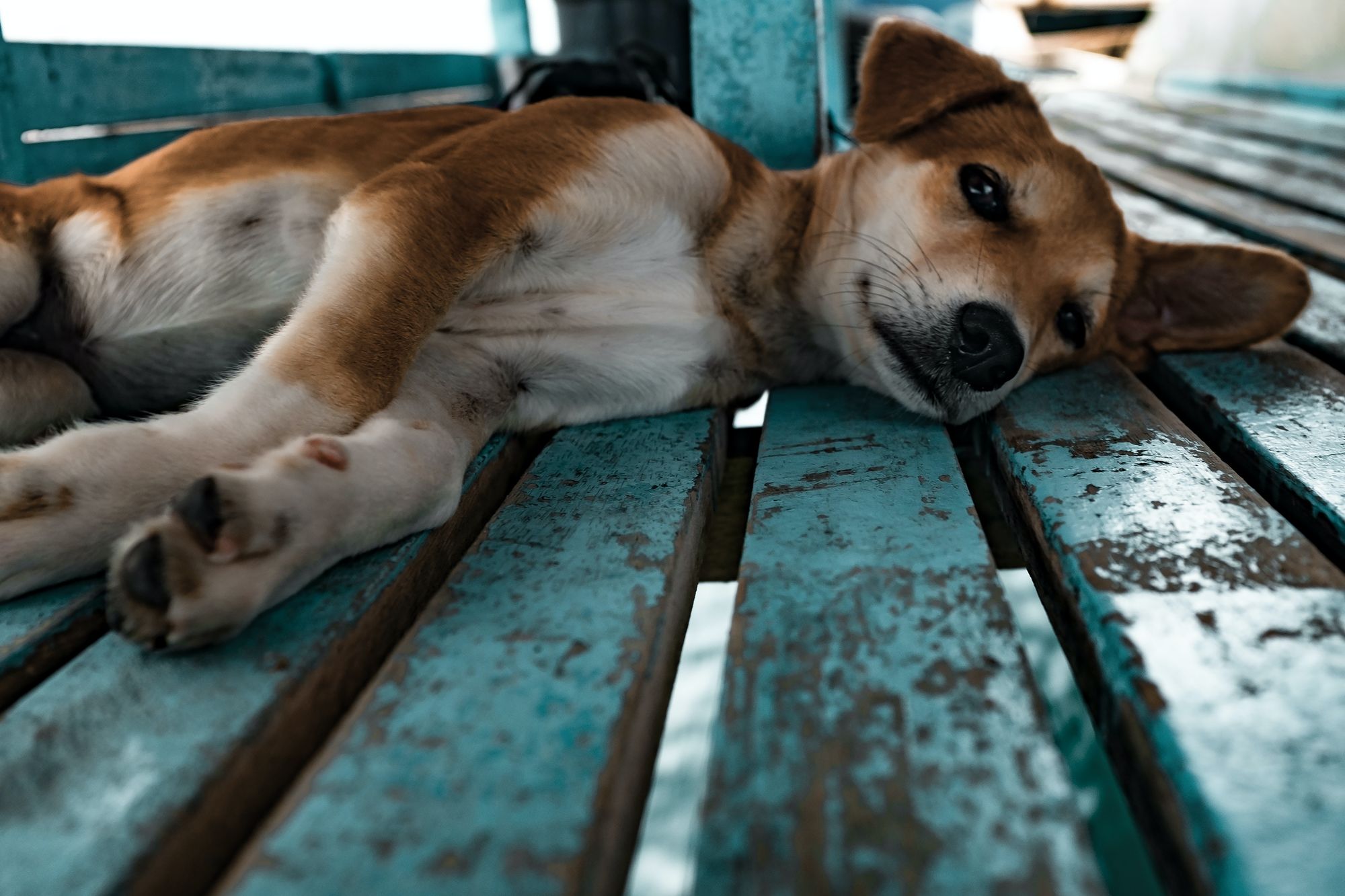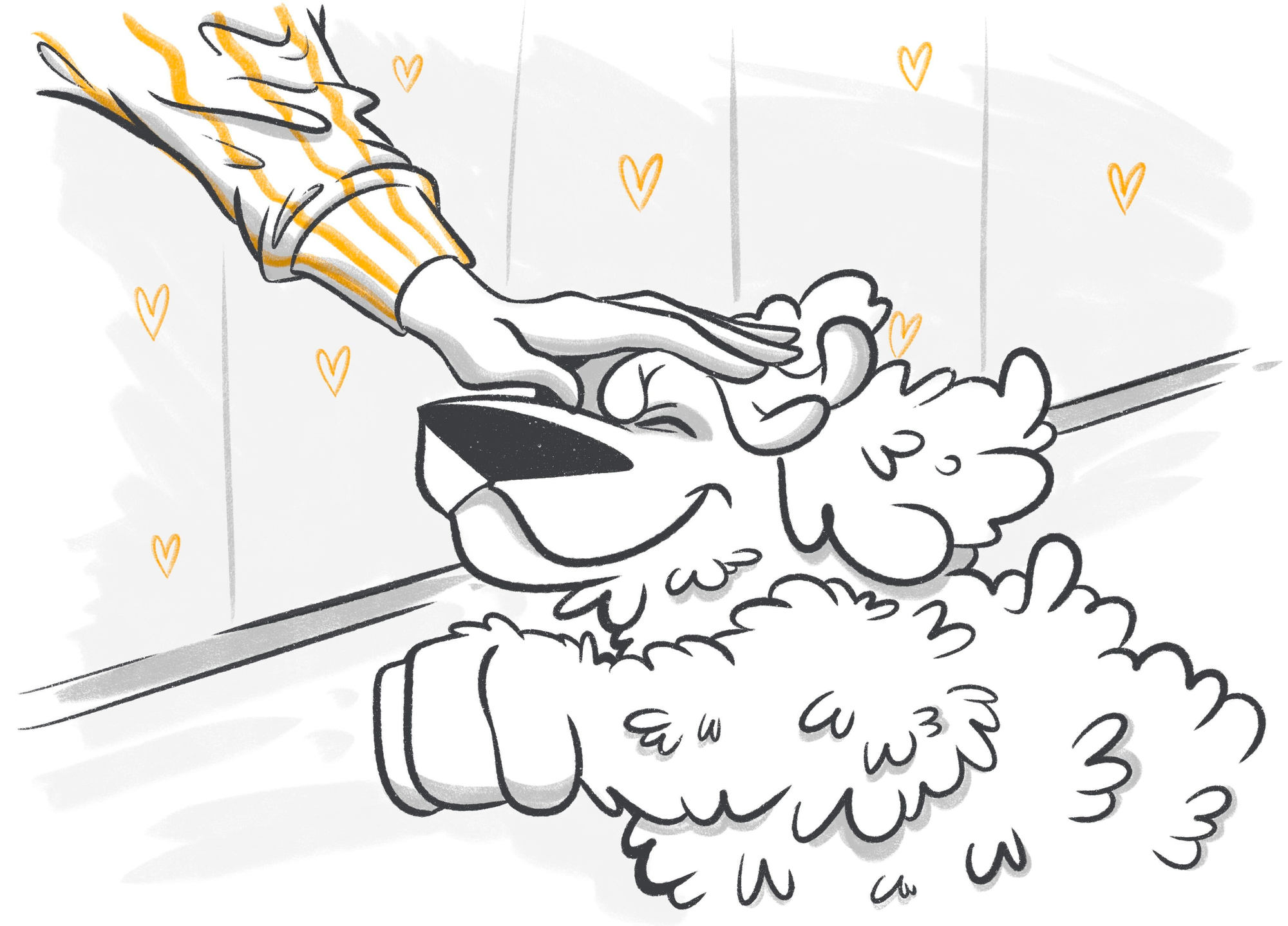People can't talk directly with dogs, but we are lucky enough to understand them through their body language. Especially if you and your pet have been together for a long time, you can distinguish their behavior very well. If you have just become friends, it's also not a problem. With the Petcube camera, you have a unique opportunity to observe your dog and get to know him better.
The easiest way to understand the feelings of a pet is to look into the dog's eyes. You can quickly tell whether they are sad and sick or happy and healthy. But what does it mean when a dog's ears come back? Keep reading to learn what to look out for and how to respond to your dog’s emotions.
In general, the position of a dog's ears can indicate sadness, nervousness, aggression, or relaxation. Let’s explore those expressions in more detail.
Content:
- Your dog is happy and relaxed
- Your pup feels threatened
- Your dog is stressed or anxious
- Your dog is not feeling well
- Your dog wants to play
- What does it mean when a dog has one ear up and one ear down
- Conclusion
Your dog is happy and relaxed
Happy dogs have their ears up and are relaxed. They feel calm and won't be jumpy or hyper if this isn't their natural behavior. So you shouldn't worry about their state and search on Google for "dog ears back".
Your pup feels threatened
Your dog's ears are pinned back with barking, growling, stiffness, and teeth. That might be a sign of a dog that is ready to attack or defend. As when an aggressive dog will instinctively put its ears back to protect them from getting bitten by other dogs. Your pup might not feel safe at the moment. At that point, you should back away and give them time and space.
Your dog is stressed or anxious

Sometimes your dog can put its ears back, avoid the owner, and look down. According to VCA study, it means they’re stressed and anxious. You shouldn't push them into contact or games. Just let them calm down and wait until they decide to come up to you or approach you first.This process will speed up if you take your dog away from stressful places and situations.
Are you worried that it could be something more serious or that your dog has been stressed for too long? So you should subscribe to the Emergency Fund. It is an affordable pet insurance alternative available only in the US.
It’s only 29 dollars per month for membership, and you will be able to chat with licensed vets 24/7, wherever you are and whenever you need. And the most important thing is that this insurance can cover part or all of the cost in an emergency with your pet.
Your dog is not feeling well
A dog might also turn its ears back when they're in pain or feeling sick. In this way, they try to protect their ears from loud noises and high-frequency sounds that are not audible to humans. Because they can hurt their ears.
Ear infections, injuries, or body aches can cause an unhealthy appearance too. You should take your dog to the veterinarian to make sure everything is well. You might make them feel better, and your parental heart won't hurt.
Your dog wants to play
A playful dog will "bow" its body, wag its tail, and put its ears back. Owners know this vibe very well. When your dog became an energizer and wouldn’t leave you alone. So it’s a good time to pay attention to your pet and play some active games. Specifically, to play fetch, run around, or practice with toys.
What does it mean when a dog has one ear up and one ear down
One ear up and one ear down — it’s a common situation for puppies. They are growing up and can have one floppy ear. But if you have an adult dog, it can be interpreted differently. Read below about the three most important reasons.
Your dog is listening
If a dog is listening, his ears can be in a different position. Dogs are more sensitive to high-pitched sounds than the average human. So sometimes they can protect their ears by lowering one of them.
Speaking of anatomy, dog ears can also move independently; it is kind of the norm to see one ear remain erect while the other is pointing down. But if your pet has this position of ears and ignores your voice and loud sounds, it might signify temporary or transient deafness. In this case, you should immediately go to the vet.
Their ear is injured
Did your dog hurt his ear playing with another dog, and it became droopy? Don’t panic; it’s not dangerous. But the possibility of getting an infection in the wound shouldn’t be ruled out. Keep an eye on your pet and their well-being.
Read more: How To Clean Your Dog's Ears?
Your dog is feeling nervous
Your pet can become nervous when they are afraid or confused. Just like humans, right?
The dog might try to listen to the owner’s voice, thus keeping one ear erect, or one might be moving more than the other. When the pet calms down, the ears will be in the correct position.
Conclusion
To sum up this article, we answered the question, "Why do dogs put their ears back?" So many points came out that you could make a small encyclopedia and call it "dog's ears' meaning." Then we have created a table that will help you navigate the definitions more easily.
| Ear Position | Possible Temperament |
|---|---|
| Up and relaxed (neutral) | Calm, friendly, and relaxed |
| Slightly forward, still relaxed (attentive) | Still friendly, becoming edgy about something |
| Pushing forward and showing teeth (aggressive) | Potential for anger, aggression, or arousal |
| Tilted back (intimidated) | Fear, illness, injury, stress (danger of fear aggression) |
| Pinned back with teeth, barking, growling, facial expressions, and stiffness | Combined with other signals of fear and nervousness (ready to attack or defend) |
But regardless of this definition, we must always pay attention to the details. What happened with your dog? What did he eat? Has he been stressed? Has he been injured? Only by knowing all the information can we understand the situation.
If you are still worried about your dog's health and cannot assess their condition, you should consult a veterinarian.
Was this article helpful?
Help us make our articles even better









